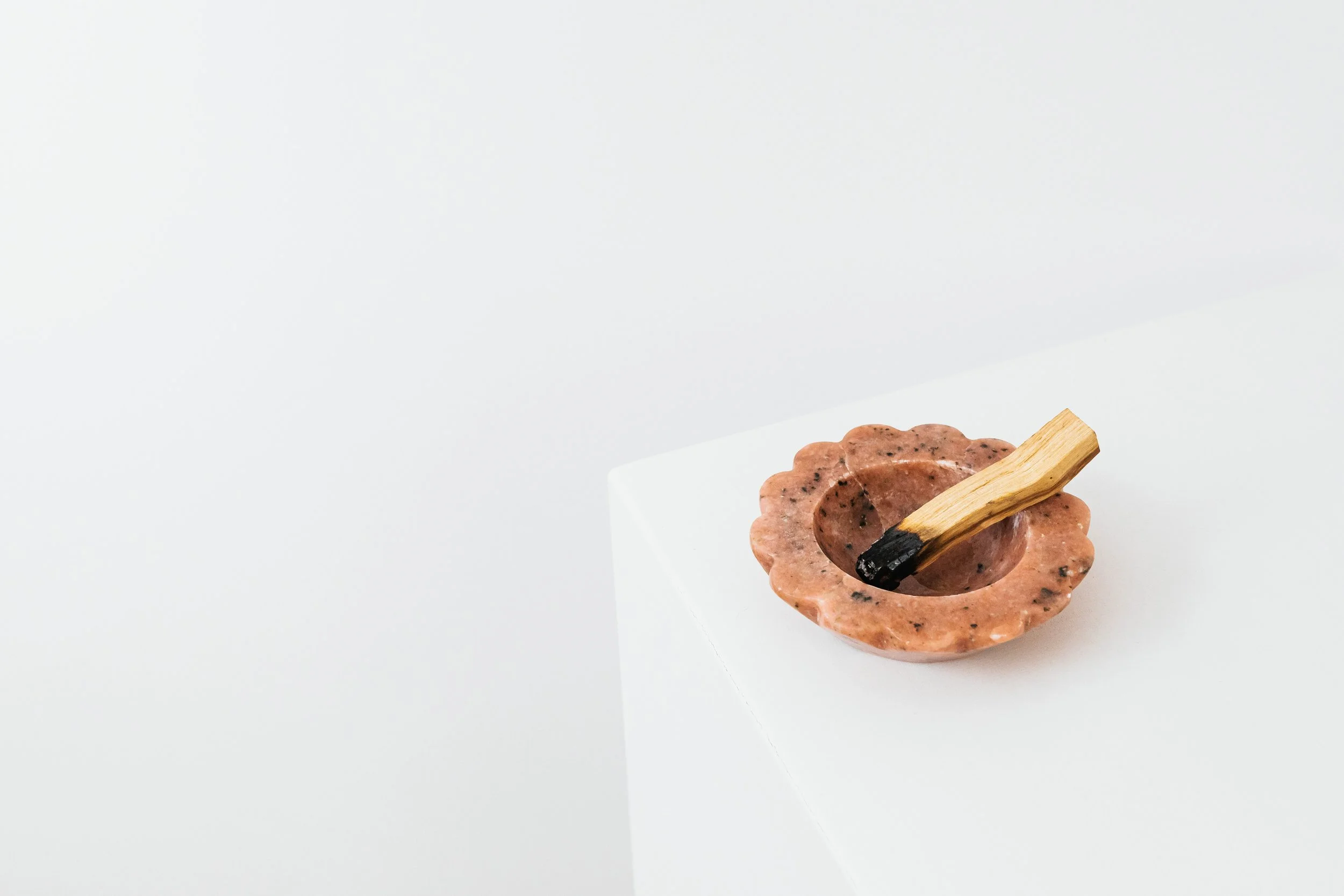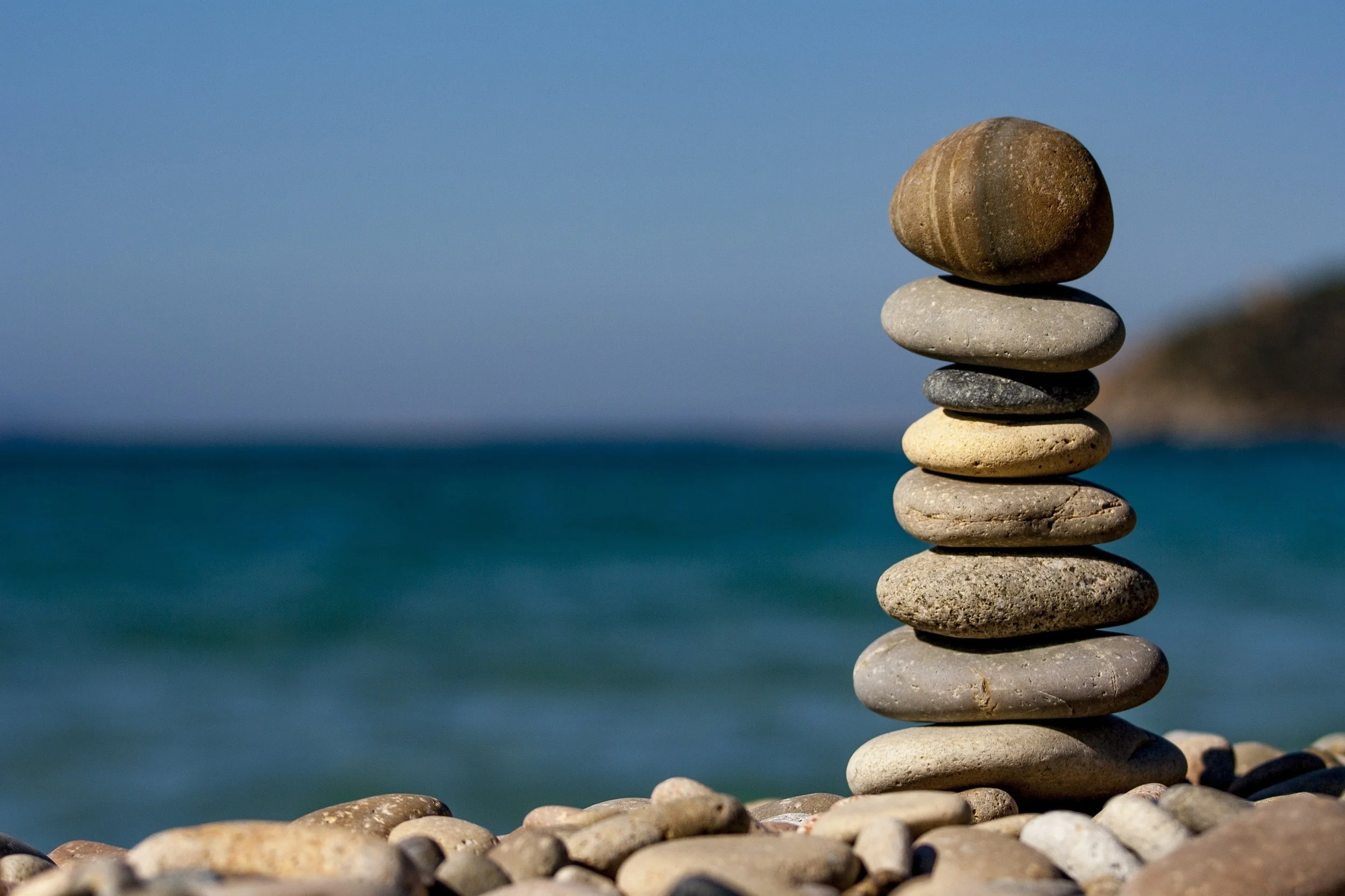PART ONE: Preparation + Relaxation
Setting yourself up for a lifetime of meditation
Preparation
Take some time to read through the following tips for creating a sustainable and lasting meditation practice.
-
I wouldn’t expect you to start meditation in the middle of the break room at work, but I also don’t expect that you can have a dedicated room just for it at home, surrounded in ‘Pinterest Zen’.
We don’t need to have anything special in our meditation space, but as humans we often like to, and there is absolutely nothing wrong with that. It can be nice to have something in a part of your home that humbles and reminds you of your own unique beliefs, religion or spiritual practices.
For me personally it is having nature close by, I like to bow to nature before and at the end of a meditation, as a way to recognise the nature within me, that I am one with nature, and with that connected to all things - if I had a specific religion, this could be to a picture or statue to humble myself with my connection/ likeness/ or aspirations of the teachings of my spiritual leader.
Ideally you do have somewhere that is a bit quieter, but I know that sometimes this is not possible - and the style of meditation that you find beneficial for this chapter of your life, may change in another chapter. When I had my son, my meditation practice become mindfulness and breathing while I was breastfeeding on the couch - externally it was not pretty, but internally it was some of the most beneficial meditating of my life, and had the most profound and noticeable impact on my state of mind.
-
We do tend to take life extremely seriously - so I plead with you ‘Lighten Up’.
Beginning our meditation practice can be messy, just like life. Even when you have been doing it for years, it is still and will always be a ‘practice’. Our minds will take off, we will get restless, but it will happen less and less.
Meditation will change your life, but don’t take it too seriously
Choose to enjoy each meditation, rather than feeling like it is something you have to tick off
Realise there is benefits in every meditation, even the ones that you do drift off and get frustrated with yourself - you are human!
Don’t aim for out of body, explosion experience, enjoy being present in whatever happens
Let go of the controlling ‘do’er’ you and simply be
Lighten up on your expectations of self to lighten up your mind :)
-
I know how strange this seems to follow on from ‘Lighten Up’ but I want you to bring that lighter mentality with you.
A meditation practice does take personal discipline and dedication, but don’t think of it like a bad thing.
This is the ultimate form of self care - to become less emotionally reactive, to decrease stress and the hormones and effects that come with it, to decrease pain, to see life more clearly, to live and embrace the moment, to rewire the connections in your brain. These are all things you can do yourself through regular meditation practice. Becoming a scholar on meditation will not achieve these results, the only way to get the benefits of meditation is to meditate regularly.
This is why finding a practice that suits you is key.
Sometimes we shy away from what can be perceived as an ‘aggressive energy’ of personal discipline, but we all have it. Getting out of bed, showering, preparing and feeding ourselves, all of these things would not happen daily without some form of personal discipline.
-
What is your personal vision for yourself? What is it that has made you read this far?
Why have you read this far?
Finding a driving force of personal kindness and self-respect, will be a positive way to cement a meditation practice into your routine and make it sustainable.
To become more peaceful
To stop struggling with myself and others
To get to know myself deeply
To be less reactive and more loving
To cope better with stress
For health and healing
To connect to my own spiritual practice
-
It is amazing how powerful creating a little ritual can be - think of a child with their ‘blankie’ knowing that they feel safe and calm when they have it.
Think of your meditation ritual like that. It can be as simple as grabbing a crystal from a bowl to hold onto, lighting an incense, putting a blanket over your knees.
It doesn’t matter what it is, any small thing can become a comforting ritual and combine it with a meditation.
-
When we think of the ‘traditional’ meditation posture, it is normally of someone sitting on the ground in a lotus position. This maybe suggested for some spiritual practices, but it is not necessary in most meditations.
You can achieve the same results sitting on your bed, on a chair - and maybe lying down (if you do not fall asleep).
One of the main benefits to a seated position is it does help you stay alert, making the process of training the mind a lot easier.
You want to find a position that you are comfortable in, but not too comfortable that staying alert becomes a battle.
-
Sit on a cushion (ideally more towards the front)
If you are crossing your legs, you want your knees to be below your hips, to take pressure away from the lower back
HANDS
Place your hands on your knees or thighs - choosing what feels most comfortable for you. Have your palms facing down.
BACK
The back needs to be straight (but not rigid). Think of the spine like a pile of coins balancing one on top of the other.
ARMS
The arms and elbows are just out from the body.
HEAD
The head tilts forward just a little, the chin slightly tucked in.
MOUTH
The mouth is slightly open as if you are about to say a gentle ‘ahhh’. An option for the tongue, is to have the tip touching the back of the top teeth
EYES
Learning to meditate it is a lot easier to close down the eyes. As you relax more, you may find you like to open your gaze a little, with a soft focus just in front of you - or alternatively you may like to take a really wide focus, taking in a large landscape.
A short guided meditation will help you begin to create the feelings of comfort and ease needed for meditation, and hopefully give you insight into the importance of preparing a physical and or mental space for meditation.
Relaxation
Learn how to relax quickly
Some of the simplest things in life can also be the hardest - I think relaxing is one of those things.
I often say that, it is easier to be busy. I know this is true for me, I often have to check in when I am in the early stages of planning things, to see if I am falling into the old habits of creating busyness.
Relaxing quickly is a skill we of course all want to master - and like anything, it does take time to get there.
Before we move to the other meditation styles, I want you to spend at least one week doing the following Progressive Muscle Relaxation. I will add new relaxation techniques after this time. Once we have spent enough time mastering the skill of relaxation, we will then move to new meditation styles.


